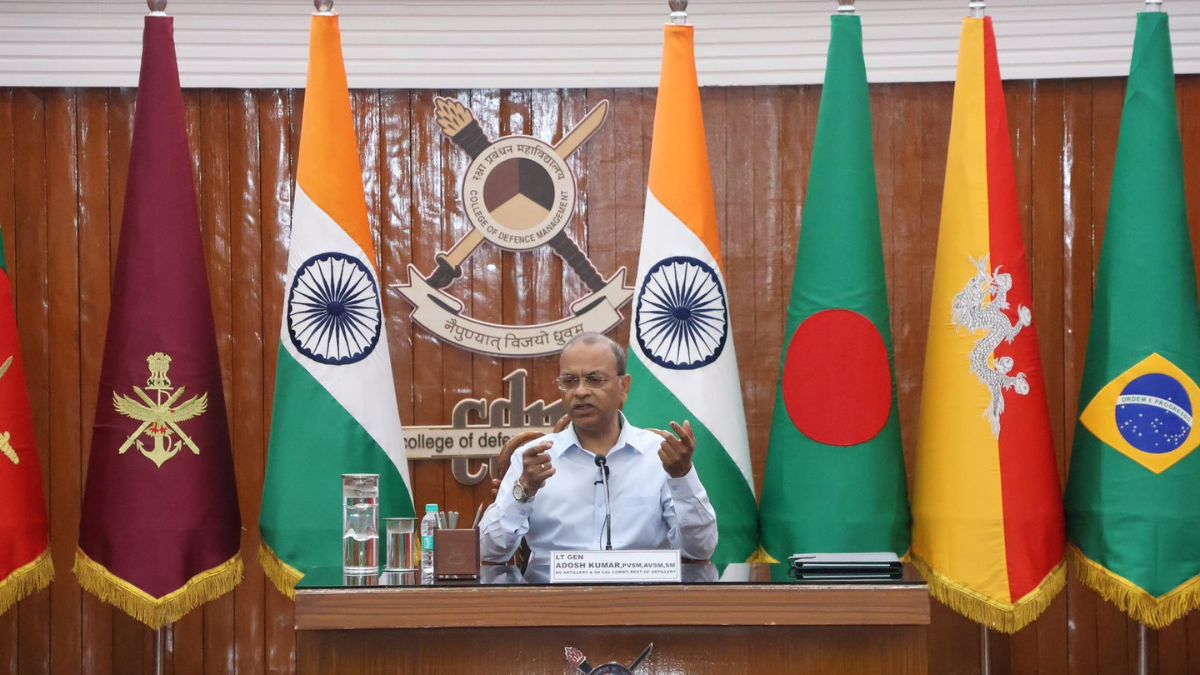The Indian Army must undergo a doctrinal, structural, and industrial transformation to prepare for the era of non-contact warfare, Lieutenant General Adosh Kumar, Director General of Artillery, said on September 19, 2025.
Speaking at the late General SF Rodrigues Memorial Lecture in Pune, Lt Gen Kumar stressed that the battlefield of the future would be shaped not just by conventional firepower but by proxy campaigns, cyber operations, space dominance, and information warfare.
“Non-contact warfare is no longer a distant concept; it is becoming the new normal,” he said during his lecture on ‘Non-contact warfare – capability building – imperatives for the Indian Army.’
He underlined that India’s adversaries have long relied on strategies short of war, such as propaganda, covert operations, and proxy actors, to impose costs without engaging in open conflict. With rapid advances in technology, these methods now extend to cyber intrusions, satellite surveillance, unmanned systems, and long-range precision strikes.
Is Operation Sindoor a case study in non-contact warfare?
Lt Gen Kumar cited Operation Sindoor as a vivid example of how integrated non-contact methods can deliver disproportionate impact. “In this operation, space-based surveillance, precision strikes, and information dominance were combined to produce devastating effects. Our space assets provided timely information that allowed us to anticipate rather than react, while precision strike vectors created significant battlefield disruption,” he said.
However, he cautioned that this was only the beginning. To stay ahead, India must make a “quantum leap forward” in both kinetic and non-kinetic domains.
Is Space, Cyber, and Spectrum Warfare at the core?
Placing the centrality of space at the top of India’s agenda, Lt Gen Kumar called for indigenous and resilient systems for wide-area imaging, electronic intelligence, and navigation. He also highlighted the growing importance of the electromagnetic spectrum as an emerging battlefield.
“Electronic warfare is not merely about jamming radios or blinding radars. It is about contested spectrum where networks collapse, data flows are corrupted, and commanders are paralysed,” he warned.
On the cyber and information front, the artillery chief pointed to AI-generated content, social media manipulation, and targeted intrusions as tools that can destabilise societies and mislead decision-makers as effectively as kinetic strikes. “Cyber resilience and information dominance are just as critical as precision firepower,” he said.
What about precision weapons and unmanned systems?
Lt Gen Kumar stressed that new technologies such as hypersonic weapons, advanced artillery, long-range rockets, and armed unmanned aerial systems (UAS) must be rapidly inducted and integrated into India’s force structure. These, he noted, enable forces to neutralise heavily fortified units from standoff distances, reducing the risks of contact-heavy battles.
Is the Whole-of-Nation approach needed for capability building?
Calling for a whole-of-nation effort, Lt Gen Kumar urged faster research and development, tighter academia-industry-military collaboration, and the scaling up of prototypes into production-ready systems. “We must nurture a vibrant ecosystem where uniformed personnel, R&D institutions, academia, and entrepreneurs work in absolute synergy,” he said.
“Escalation in modern warfare does not follow linear paths. A cyber strike can escalate into kinetic retaliation. Our doctrines and rules of engagement must reflect this new reality,” Lt Gen Kumar said.
The senior officer concluded by emphasising that future wars will be won by the side that can fuse space, cyber, electromagnetic, information, and long-range strike domains more rapidly and seamlessly than its adversary.
